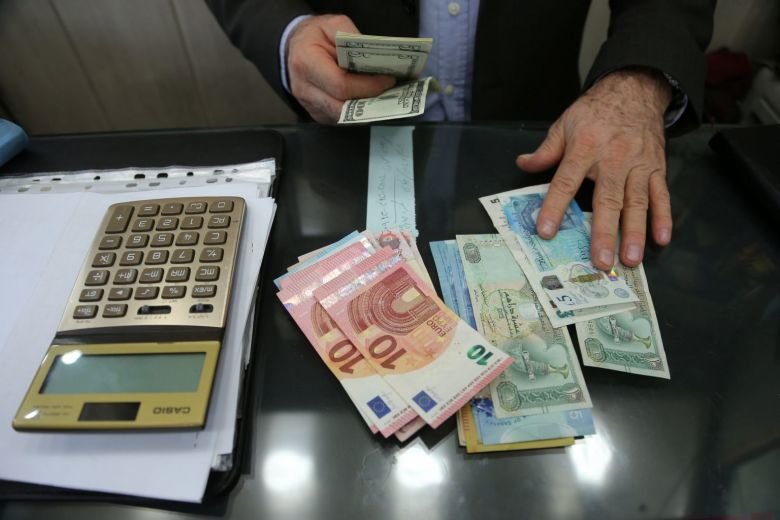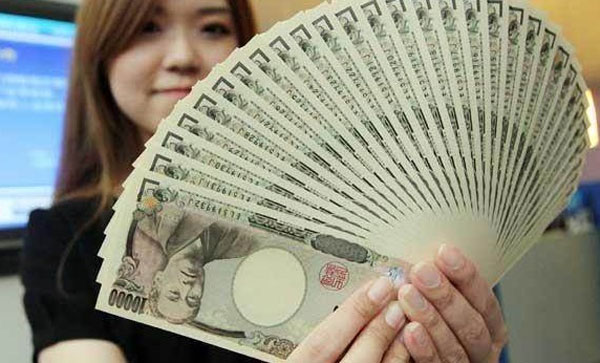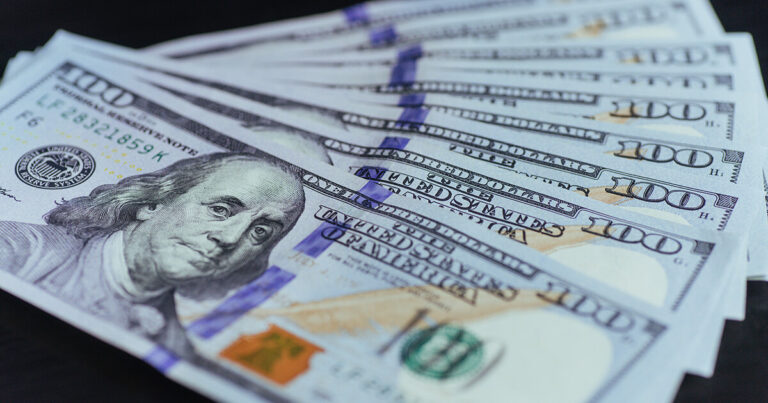
New week, another exciting weekly wrap. As most of the G7 economies churned out negative economic data, optimism of a US stimulus package ignited risk appetite at the expense of the safe-haven currencies. In the foreign currency market news, other fundamentals also affected g7 economic performance. Here is what happened to the g7 currencies in the second week of February.
The Fundamentals!
Here are the fundamentals that affected the g7 currencies.
Positive Sentiments
Positive sentiments are emanating from the continued US’s covid 19 stimulus package, and economic recovery dominated foreign currency market news over the week.
A sharp decline in covid recent cases and the continuing vaccination rollout added high optimism to the US stimulus package. All these factors contributed to the positive sentiments in the week that lead to high risk-on appetite.
Coronavirus Pandemics
Despite a global fall in covid 19 infections and hospitalizations, the new variants now pose a serious challenge to health experts — are the current vaccines effective against them?. The new variants spread faster and have a high death rate.
For instance, in France, the UK’s covid 19 variant accounts for a quarter of the recent cases recorded daily. New variants of the novel coronavirus have been recorded in South Africa, Brazil, and the UK.
Except for Japan, other g7 countries continued with the vaccination rollout, most of them within the target. Japan plans to give its citizens the protective jab soon.
International Relation
Joe Biden called his counterpart in Beijing, Xi Jinping, to express his concerns. Joe Biden expressed his displeasure with China’s unfair and coercive business practices. The US president’s agenda included Taiwan and Hong Kong’s security issues.
The two leaders’ other issues included covid 19 pandemic, global security, climate change, human rights abuses, and weapons proliferation prevention. The US administration is keen to re-establish positive international relations with the Beijing administration.
Economic Updates
The g7 e economies released financial updates that were negatively skewed. However, the adverse economic reports were overshadowed by the positive sentiments causing risk on appetite over the week.
Crude Oil Price Trend Analysis

According to crude oil price trend analysis, oil prices climbed higher, and a significant 2% jump was recorded on Friday. Bulls took advantage of the US stimulus plans and production cut to push oil prices up. Over the week, oil prices increased by 4.7%.
Performance and Economic Review of the G7 Currencies
Table: Performance summary of g7
| currency pair | 8th Feb | 14th Feb | Average price | Percentage change | remarks |
| USD | 90.919 | 90.470 | 90.519 | 0.617 | decrease |
| GBP/USD | 1.3729 | 1.3853 | 1.3818 | 0.9903 | increase |
| EUR/USD | 1.2048 | 1.2120 | 1.2108 | 0.6519 | increase |
| USD/CHF | 0.8986 | 0.8912 | 0.9021 | 0.8456 | decrease |
| USD/JPY | 105.22 | 104.93 | 104.80 | 0.41 | decrease |
| USD/CAD | 1.2738 | 1.2694 | 1.2705 | 0.4470 | decrease |
| AUD/USD | 0.7700 | 0.7753 | 0.7733 | 0.900 | increase |
| NZD/USD | 0.7218 | 0.7224 | 0.7224 | 0.3752 | increase |
Risk On Sentiments Weakens USD
The Dollar ended 2nd February poorly, reversing the previous week’s rebound. Thanks to risk on sentiments fuelled by US relief packages optimisms, the Dollar shed off 0.62% to close at 90.480. In the week before, the usd had risen by 0.46% to 91.004.
According to Investing.com, the Dollar weakened from Monday to Wednesday. However, it recovered on Thursday and Friday, but not enough to uplift it from the red zone. The impressive performance towards the last part of the week is linked to the US negative economic updates.
On the economic data front, the US posted a financial report skewed to the negative. Employment figures went up and inflationary pressure reduced from 1.6% to 1.4%. However, consumer prices remained steady. Consumer sentiments and weekly jobless claims featured in the foreign currency market news towards the end of the week.
The weekly jobless claims dropped from 812k to 793k, but still on the higher side. Contrary to earlier projects by economists, consumer sentiments dropped from 79.0 to 76.2. Consumer expectations also disappointed, dropping from 74.0 to 69.8.
On the fiscal policy front, Federal Chair Powell assured the financial market that the low-interest rates would remain unchanged for a while. He further stated that the unemployment rate is still high, probably closer to 10%
GBP/USD
In the UK, the sterling Pound staged a dramatic comeback on Friday to recover from a poor start earlier in the week. Thanks to optimism fuelled by the UK’s exit lockdown measures as covid 19 cases ebb.
On the economic front, retail sales figures dropped, primarily affected by the spike in new virus variants. While reail sales figures increased from 4.8% to 7.1%, house prices dropped from 63% to 50 %.
On a positive note, however, GDP, industrial production, and manufacturing were favorable to the sterling pound. Beating market expectations, 4th quarter GDP increased by 1.0%. Manufacturing production expanded by 0.3%, while industrial production grew by 0.2%, both below earlier forecasts.
The UK’s house prices increased despite the lockdown measures. Even though still high, the UK reported a drop in covid 19 infections, and Boris Johnson unveiled plans to relax lockdown measures. The Brexit deal also featured in force market news and pressured the Pound southwards. The deal threatens the UK’s post covid 19 recovery efforts.
By the end of the week, the sterling Pound grew by 0.83% to close at 1.3849 to the US dollar. In the previous week, gbp had risen by 0.20%.
EUR/USD
Coronavirus news and economic data primarily drove the performance of the euro. Over the week, the euro grew by 0.61% to close at 1.2120 against the usd. In the week before, the euro had stumbled by 0.74%.
The renewed spike in coronavirus cases, the virus’s mutation, and the lockdown measures significantly drove the euro’s foreign currency market news. And ECB’s President Christine Largate showed the resurgence would greatly hamper the Eurozone economic recovery process.
On the economic front, negative data pressured the euro downwards. Industrial production dropped by0.2% while inflationary pressure increased. Consumer prices, too, rose, adding more pressure on the euro.
Because of the poor economic data, Largade showed the Eurozone would need financial aid into 2020. The covid 19 new variant continues to block the light at the end of the tunnel, and Germany imposed strict border checks.
USD/CHF
COVID-19 infection cases and hospitalization went down in Switzerland. This added to the positive global vibes that uplifted the Swiss franc against the Dollar. In the foreign currency market news, Swiss also posted positive economic data, pushing its currency up.
The unemployment rate increased from 3.5% to 3.7%, while the consumer price index increased by 1.0%. Swiss franc ended the week stronger against the usd by 0.8456% closing at 0.8912.
Canadian To American Dollars

Meanwhile, in Canada, the loonie increased by 0.47% to close at 1.2696 after a previous increase of 0.16%. With few financial data, coronavirus news, crude oil prices, and positive sentiments significantly drove Lonnie’s performance.
Foreign currency market news shows that improved oil prices and positive global sentiments mainly uplifted the Canadian to American dollars exchange rate. However, an upsurge in coronavirus new variant cases coupled with lockdown measures worked intensely against the loonie.
On the financial front, Canada sped up its plans on digital currency launch amid the pandemic. On Friday, wholesale prices dropped by 1.3% in Canada.
AUD Tops The Week Again
In the week ending 14th February, the Australian Dollar rallied by 1.08% to close at 0.7761 against the American Dollar. Australia’s positive economic data in foreign currency market news significantly uplifted the Aussie Dollar. Impressively business confidence index jumped from 4.0 to 10.0, and the Consumer Sentiment index expanded by 1.9%.
The Australian Dollar rode on the back of positive global sentiments to be the week’s top gainer. On Thursday, Treasury Secretary Steven Kennedy showed that Australia’s economy was recovering faster than expected.
However, the UK’s covid 19 variants worked against the Australian Dollar, and the country is preparing for a third lockdown
NZD/USD
In a relatively quiet week, the New Zealand Dollar ended the week stronger by 0.35%, closing 0.7223 to the usd. Foreign currency market news suggests that the private sector improved while Electronic card retail sales disappointed the kiwi dollar.
Negative trade challenges with China and the recent hack on the central Bank of New Zealand downplayed the uprising of the kiwi dollar. However, positive economic data and global vibes leveraged the kiwi dollar.
Japanese Yen Performance

Meanwhile, in the far east, the Japanese Yen grew by 0.43% to close at 104.94 against the US Dollar. In the week before, the Yen had slumped by 0.68%.
Positive global sentiments and the expected covid 19 vaccines rollout supported the Japanese yen performance. Japan’s trade surplus spiked and also received A credit rating.
Conclusion
Despite unfavorable economic updates, the US dollar could not withstand the positive sentiment turbulence in foreign currency market news. In the end, the US dollar weakened and also weakened the other g7 currencies.
Moving forward, for how long will the positive vibes drive the performance of the forex market? To find out, be sure never to miss our upcoming articles.
Related: Forex Currency Analysis From 1st to 7th February, 2021




